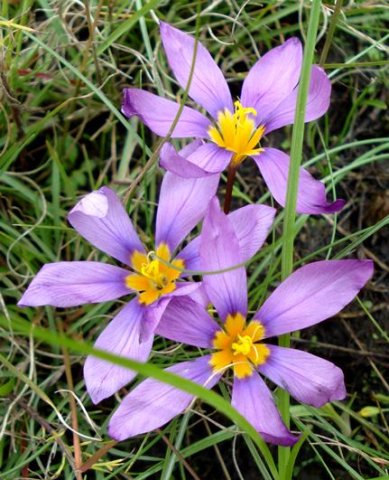Syringodea

Author: Ivan Lätti
Photographer: Judd Kirkel Welwitch
Syringodea is a genus of cormous, deciduous perennials in the Iridaceae family.
The plants grow from corms that are asymmetrical, compressed or top-shaped. Roots grow from a basal ridge on the corm, the ridges circular or crescent shaped. The tunics are woody or papery. The often-branched, short stem is underground, sometimes sheathed in the fibrous neck of the corm.
A few to several leaves are grown, the lower two or three only cataphylls. The real leaves are narrow, linear, or lanceolate, flat, channelled or cylindrical.
The flowers are solitary on short underground pedicels. There are membranous bracts or bracts with membranous margins below the flowers, green above-ground with margins united below, the inner bract two-keeled and notch-tipped.
The six tepals form a radially symmetrical, salver-shaped perianth with markedly elongated tube. Flower colour is purple or pink, rarely white.
The three stamens arise at the mouth of the tube, their anthers erect or ascending. The inferior ovary is underground (below the long flower tube). The style is thread-like with short, undivided branches or lacerated tips. In picture the style branches recurve.
The fruit capsule is mostly club-shaped or top-shaped with a narrow base. The six-valved capsule is hygrochastic, i.e. opening when wet, closing when dry, while rarely the opposite: xerochastic (opening when dry), shaped three-valved and ellipsoid.
There are eight Syringodea species, all in southern Africa, mostly found in the southern and western Karoo. The plants differ more in their leaves than their flowers that never have above-ground pedicels. Once fertilised, the ripened capsules are pushed up from the underground for seed dispersal.
The genus is closely related to the genera Crocus and Romulea. Crocus is different in having elaborately keeled leaves, Romulea in partly above-ground stems, divided style branches, four-grooved leaves, smooth seeds and pollen.
The plant in picture is Syringodea bifucata (Leistner, (Ed.), 2000; Vlok and Schutte-Vlok, 2015).

